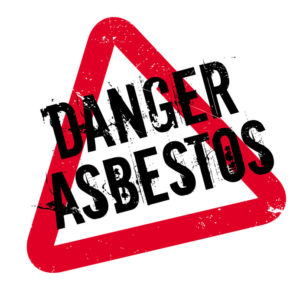
10 Surprising Places Where You May Find Asbestos

Hopefully, someday, we will no longer need to conduct tests for asbestos. For now, however, asbestos testers still routinely discover dangerous sources of potential asbestos exposure.
What is asbestos?
As the Mesothelioma Center explains, “Asbestos is a group of six naturally occurring minerals composed of soft, flexible fibers that are heat-resistant. Asbestos is still used in hundreds of U.S. consumer products. Its use is allowed as long as it accounts for less than 1% of the product. Exposure to asbestos causes cancers and other diseases, including mesothelioma and asbestosis.
When did we know that asbestos was dangerous?
Here’s a Brief History of Asbestos that should answer that question:
- 1924: The British Medical Journal documented the first cases of asbestos-related illnesses, leading the government of Great Britain to enact legislation designed to protect factory workers.
- Mid/late 1940s: The fire-resistant properties of asbestos fuel its gains in popularity in U.S. manufacturing
- Mid 1950s: A link between asbestos and lung cancer is identified.
- 1960s: Mesothelioma, which we now know is the most common form of cancer caused by asbestos, was first diagnosed.
- 1970s: The U.S. Occupational Safety and Health Administration (OSHA) as well as the Consumer Product Safety Commission (CPSC) both limit – but do not ban – the use of asbestos.
- 1989: Another U.S. agency, this time the Environmental Protection Agency (EPA) finally goes farther, banning the use of asbestos in any new manufacturing. The agency also says all schools need asbestos inspections.
Where can asbestos be found in your home?
In addition to roof shingles and floor tiles, according to the Mesothelioma Center, asbestos can be found in a surprising number of places in your home, including:
- Brake pads and gaskets
- Stoves
- Oven mitts and pot holders
- Clothes dryers
- Coffee makers
- Certain paper products
- Crayons
- Amateur crime lab kits
- Children’s makeup
- Hair dryers
If you have concerns about possible exposure to this dangerous material in your home, please contact the environmental testing pros at AirMD to ask about residential asbestos testing.






